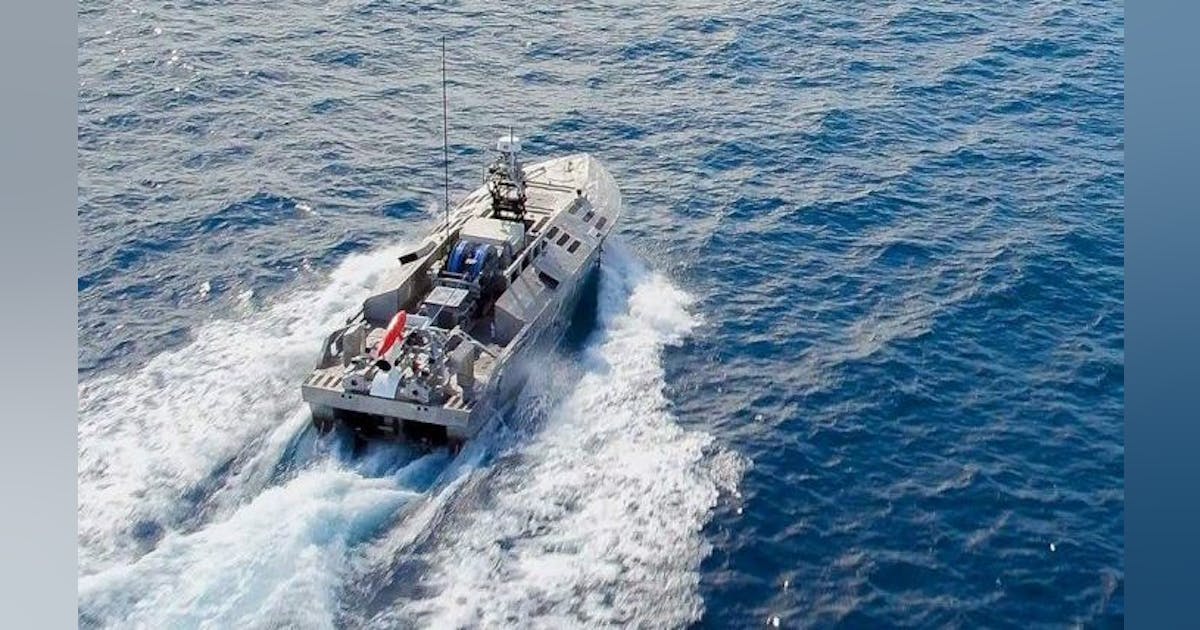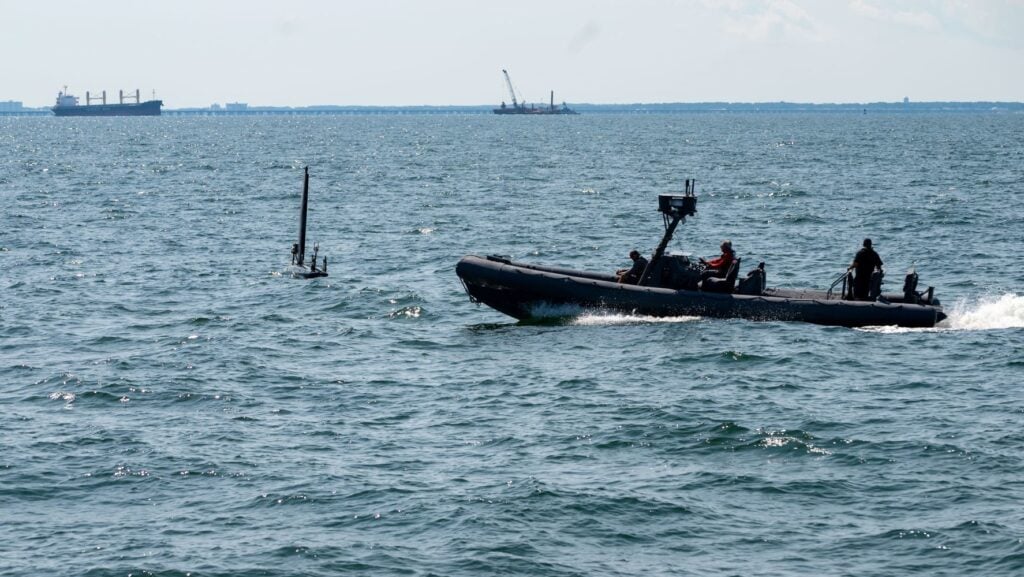An unsolicited proposal from AAI to the USN for a new Fleet class USV. AAI built two prototypes on it's own dime, which the USN evaluated during the recent Trident Warrior exercises. Despite apparently doing well, there doesn't seem to be any prospect for USN orders in the near future. MAPC (Maritime Applied Physics Corporation) assisted with the design.
The CUSV utilizes a modular architecture that accommodates platform reconfiguration and interchangeable payloads. This common vessel is capable of executing mine warfare; anti-submarine warfare; communications relay; intelligence, surveillance and reconnaissance; anti-surface warfare; and UAS/UUV launch and recovery missions.
AAI Unmanned Aircraft Systems
In this exercise, one CUSV played the hunting dog, locating the mine with sonar. Then the other, the hunter, launched an even smaller unmanned vehicle, a kind of smart torpedo called a Sea Fox, to destroy the mine. A single human operator controlled the CUSV from shore, while a second operator ran the Sea Fox. The artificial intelligence on board the craft is largely borrowed from the widely used Shadow drone.
The Trident Warrior exercise happened close to shore, a reasonable simulation of conditions in the Strait of Hormuz should Iran try to mine the chokepoint of the Persian Gulf. For open ocean missions the CUSV could be launched from a larger vessel, like the Navy's new Littoral Combat Ships -- the CUSV can be carried by either variant -- before launching the Sea Fox or other mini-submersibles.
It's sort of Russian nesting dolls with robots. Tactically, "it buys you battle space," said Stan DeGeus, the AAI executive who went over the CUSV program with AOL Defense at last week's AUVSI unmanned technologies conference: The manned mothership can keep its distance or even flee while the robo-boats go forth to meet the threat. True, CUSVs can't make the speed of helicopters. They're a lot cheaper, and because they're far more fuel-efficient they can stay on station for days at a time, including operating at night, when it would be too dangerous to fly helicopters at low altitudes to hunt mines with towed sonar arrays.
.....But AAI's also experimented with using a CUSV as an unmanned patrol boat to warn off intruding surface vessels with recorded messages, broadcast over a kind of super-loudspeaker called a Long-Range Acoustic Device (LRAD). Other missions up for consideration including hunting submarines, jamming enemy transmissions, and even transporting Navy SEALs.


